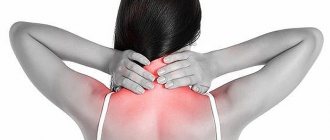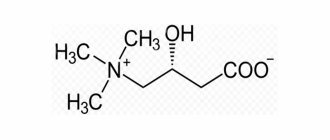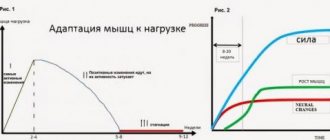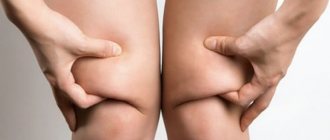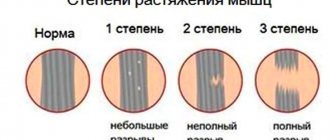You can remove lactic acid from muscles using professional methods and folk remedies. Recommended:
- eat lemon with peel and without sugar/honey;
- take a contrast shower;
- visit a bathhouse or sauna.
Massage and the use of certain tablets and products from the sports nutrition category will also help. The harm of lactic acid to the body is questioned by doctors and sports instructors, but a person’s well-being after intense exercise needs to be alleviated competently.
What is lactic acid
Lactic acid, which is a product of the breakdown of glucose, is formed in muscle tissue only when there is a load on them. Its composition consists of two active substances - hydrogen and lactate. The ions of the first have inhibitory properties in relation to nerve impulses that pass through muscle fibers. As a result, muscle contraction becomes weak, all metabolic processes in them slow down.
The higher the hydrogen level, the more physical fatigue you will feel after exercise. There is pain, which can be intense and last for several days with a gradual decrease in severity.
Delayed pain syndrome
This phenomenon is also accompanied by painful sensations after intense exercise, but only on the third day, not earlier. At this point, lactic acid has already left the body. These pains are very similar to each other, but the syndrome is a consequence of microtraumas of muscle tissue, ruptures.
Delayed pain syndrome also lasts about two or three days. But in this case, lactic acid is not removed, but microscopic damage is restored. The duration of elimination of tears directly depends on the immune system and the body’s strength.
Causes and symptoms of accumulation in the body
Physical activity involves the supply of a large amount of oxygen to the muscles; it is needed for their normal functioning and replenishment of expended energy. If the training takes place in an intensive mode, then oxygen begins to flow to the muscles in limited quantities, which causes a significant decrease in blood flow. This is what provokes the active breakdown of glycogen and the subsequent formation and accumulation of lactic acid.
The substance in question is produced in such quantities that the slow blood flow simply does not have time to remove it. When accumulated, a burning sensation and tingling sensation appear in the muscle tissue. Additionally, a loss of strength appears and a stressful state develops.
This mechanism “turns on” not only during specific sports training, but also during long walking, working in the garden, and while swimming. The only difference is that the discomfort and pain in the second case will be much weaker, “softer”.
Symptoms of lactic acid accumulation in muscles are:
- pain in those places that were especially carefully worked;
- excessive fatigue;
- feeling of aches throughout the body and “brokenness”;
- low-grade fever and mild chills.
Such discomfort can persist for 5 days, usually disappears on its own, but in some cases medical help may be required.
We recommend reading about shaping for weight loss. From the article you will learn about the benefits of shaping, home workouts, the sequence and set of exercises for the abs, legs and buttocks. And here you can read more about the benefits of stretching for weight loss.
Symptoms
When lactic acid is formed, it is immediately felt by the body in the form of pain in the muscle tissue. Sometimes after a difficult workout it can even be difficult to walk and roll over in bed. The muscles that have been most involved in physical activity experience particularly severe pain. For example, after exercises on the legs, the quadriceps and hamstrings will hurt.
It is important to finish your workout correctly
Obvious symptoms of this phenomenon will be increased fatigue, a feeling of “overwhelm” and even a feverish state. This condition can last up to 5 days, but usually goes away on its own. But sometimes an excessive amount of lactic acid can lead to rupture and damage to muscle fibers, so special measures and procedures are designed to get rid of these sensations.
It is also worth remembering that feeling tired during training does not always lead to pain later. However, if there is severe burning and discomfort during exercise, you should stop training or reduce the load so as not to damage the muscle fibers.
The relationship between acid and testosterone
Scientists have established a direct connection between lactic acid and testosterone - at 15 seconds of intense exercise, the hormone is released into the human blood, which occurs simultaneously with the first accumulation of lactic acid in the muscles. Testosterone is essential for building muscle, which will benefit both men and women.
It is interesting that one of the components of the substance in question, namely lactate, together with caffeine, makes lactic acid identical to anabolic steroids used for active, almost uncontrolled muscle building. Some researchers are trying to use this fact to invent a drug for athletes, but so far all experiments have been unsuccessful.
Krepatura and further sports activities
Is it possible to exercise if your muscles hurt? The answer is yes, if the pain is not severe.
As a rule, most practitioners are less interested in the causes of muscle pain. Basically, everyone is wondering, is it possible to exercise if your muscles hurt? The answer to this question interests all sports fans without exception.
Muscle pain (sometimes the term “soreness” is used) is evidence that you have not had time to recover from the previous load. If your every move is accompanied by oohs and ahs, forget about sports for a few days. Take a break and let your body recover.
Is it possible to exercise if the muscles do not hurt too much? Yes, definitely. If doing the exercises does not hurt you, but is just slightly unpleasant, light training is not only allowed, but also very useful. Perform a couple of exercises (two sets) for each muscle group - this will be enough.
What removes lactic acid from muscles
There is a category of specialists who claim that lactic acid is removed from muscles:
- cherry and pomegranate juices (natural only) – immediately after receiving the load you need to drink 200 ml;
- decoctions of nettle or birch leaves, rose hips or hawthorn berries without sugar - use 300 ml + 1 teaspoon of honey;
- fresh vegetables, fruits, herbs - they should be present in the daily menu and in large quantities.
Other methods also help solve the problem - sauna, bathhouse, hot baths with the addition of plant extracts or salt, increased drinking regimen.
Some doctors argue that it is impossible to make the process of getting rid of lactic acid accumulations faster; you just need to endure the discomfort until complete recovery.
Benefits and harms
The formation of lactic acid has its positive and negative sides:
- Source of energy. Lactate, which accelerates ATP production, is considered an ideal fuel for high-intensity training programs. The effect of another component of lactic acid - the hydrogen ion - is to slow down energy reactions and negatively affect muscle contractions, making them weak and causing a burning sensation.
- Safety function. The accumulation of lactic acid and the associated discomfort signal an insufficient supply of oxygen to the tissues.
- Effect on muscle growth. Lactate promotes vasodilation, improved blood flow and better transport of oxygen to muscle tissue.
- Discomfort directly during exercise. Lactic acid does not tend to linger in tissues and is excreted within a few hours. However, you should not subject the body to too much overload - frequent (more than 2 times a month) burning sensation in the same muscle group can lead to the breakdown of muscle fibers.
- Delayed onset muscle pain syndrome. The causes of the condition, in which pain appears several hours or days after exercise, are usually damage or inflammation of muscle tissue, which is very typical for strenuous exercise. Discomfort persists until complete recovery and is not related to lactic acid. Fatigue and cramps can also be caused by a lack of vitamins and minerals in the body.
- Lactic acidosis is a pathological increase in the volume of lactic acid, characterized by a significant increase in the acidity of the environment due to a decrease in pH levels, and affecting the functioning of almost all organs and cells. Lactic acidosis does not develop from physical exertion, but is a companion to diseases such as diabetes, leukemia, sepsis, and acute blood loss.
Consequences of unremoved lactic acid from muscles
There is an opinion that unresolved lactic acid in the muscles has a negative effect on the tissue and makes all subsequent workouts useless. What actually happens is this:
- a rush of blood to the muscle fibers begins immediately after the end of the workout;
- lactate is washed out, enters the liver through the bloodstream and is transformed there into glucose;
- Glucose is returned through the bloodstream to the muscles.
A “circulation” of substances occurs in organs and systems, which has a positive effect on the muscles and ensures a flow of oxygen to the fibers at each subsequent workout.
But if training takes place frequently, contrary to the recommendations of instructors, and always in an intensive mode, then without the removal of lactic acid, a period of chronic fatigue, apathy, and reluctance to continue training may occur. Against the background of pain and “weakness,” a stressful state can develop, even to depression, when gastronomic breakdowns begin and a complete refusal to play sports.
Education
The main source of energy in the body is glucose; it affects the normal functioning of the human brain and nervous system. During the reaction of glycolysis (breakdown of glucose), adenosine trisphate (ATP) is formed, a substance the amount of which determines the degree of contraction of muscle fibers and the duration of their work without fatigue. This process requires a large volume of oxygen.
Excessively high loads lead to poor blood circulation, which stops the supply of oxygen to tissues. Under such conditions, in addition to the synthesis of ATP, lactic acid (or lactate) accumulates in the muscles, which, by lowering the pH level, becomes not only an indicator of high-quality training, but also the cause of discomfort.
Recent studies have proven the fallacy of the idea that lactic acid is produced exclusively in anaerobic (without oxygen) conditions - it is also synthesized in muscles that receive a sufficient amount of it. An increase in its concentration with increasing intensity of exercise only indicates that the body does not have time to remove excess lactate, the production of which increases significantly.
How to Disperse Lactic Acid After Workouts
You can disperse lactic acid after training using the following methods:
- Finish the session with light aerobic exercise. Just 10 minutes of walking on a treadmill, riding an exercise bike, or bending/stretching is enough to restore blood flow to congested tissues.
- Take a shower. The water is made at a comfortable temperature, the jets are strong to create the impression of a light massage.
- Drink at least a glass of liquid. This can be pure still water, juices, herbal decoctions.
But it is much easier to prevent stagnation in muscle fibers; for this you need to follow a couple of rules:
- The training should begin with minimal load on the body - warm-up for 10-15 minutes. Regular exercises from the morning exercise complex can also act in this capacity.
- The best option is interval training. The rest between exercises should be short, but active - just lie down and restore your breathing incorrectly, you need to “shake” your lower and upper limbs, raise your arms up and, with a noisy exhalation, “throw” them down, tilting your body.
Watch this video on how to disperse lactic acid after training:
Prevention
It is easier to prevent a problem than to solve it. Therefore, be sure to follow these simple rules:
- Determine the type of load for yourself. You can’t suddenly start playing sports. Especially if you previously led a sedentary lifestyle.
- Sports activities should be systematic and dosed. Gradually begin to increase the intensity, carefully prepare for the next workout.
- First, do some stretching exercises, then relax any muscles that are very tense.
- The muscular system will quickly recover if you get proper rest, sleep as much as possible, and eat foods that contain antioxidants.
- Plan your every action. When you train, build your program wisely. Proven! The more a person rests, the faster lactic acid is eliminated.
- Contact a personal trainer, he will recommend how to train correctly.
- After you've finished training, don't forget to do some light aerobic exercise. You can do a little exercise on an exercise bike or jog.
So, sport is necessary for life, you just need to train correctly and in moderation. Delayed muscle pain that appears after training is often associated with microtrauma. The more you exercise, the less time it takes for your muscles to recover. For this reason, a strong burning sensation and unpleasant pain appears. Over time, all the unpleasant sensations go away, on the contrary, the sport begins to bring pleasure. Nutrition is of no small importance. The diet should include animal and plant
Many bodybuilders believe that lactic acid is the cause of sports ailments. Having become more familiar with its properties and action, you will understand that everything is not so bad.
How to remove lactic acid from muscles at home
Pain, discomfort, aches and other unpleasant sensations will persist in the body for the first 2-3 hours or more, so it is worth using effective methods for removing lactic acid from muscles at home. These include drinking plenty of fluids, massage, hot baths and others.
How to remove lactic acid from muscles with massage
You can remove lactic acid from the muscles with a massage, which will take 20-30 minutes, using rubbing, clapping, pinching, and tapping. All movements should be smooth, relaxing and warming. The massage should be carried out after taking a shower and using cosmetic oils or creams (they will have a positive effect on the condition of the skin).
If training is carried out for weight loss, then you can use honey. They take it in their fingers and begin to perform applying movements on the legs, waist, stomach and arms with their palms. Within 5 minutes, instead of the beekeeping product, a gray sticky and viscous mass will appear on your hands - this means that toxins and waste have been removed from the dermal cells.
Massage can be performed independently or by a specialist at a fitness club or beauty salon.
How to remove lactic acid from muscles by drinking plenty of fluids
Lactic acid is actively removed from muscles with the help of water; for this you will need to drink at least 3 liters of liquid per day. It can be not only water, but also green or herbal tea, but without sugar or other flavoring additives. Drinking plenty of fluids speeds up metabolic processes, which ensures rapid removal of waste products from the entire body.
If a person has a history of diseases of the kidneys, urinary system, heart and blood vessels, then you should consult your doctor about the advisability of drinking plenty of fluids.
How to quickly remove lactic acid from your muscles in a hot bath
To quickly expel lactic acid from the muscles, you first need to draw hot water (maximum temperature, but without the risk of burns), then carry out the procedure according to the scheme:
- 10 minutes – warming up in water (heart area excluded);
- 5 minutes – break, exit from the water;
- 10 minutes in the bath.
It is advisable to add pine needle extract or a special turpentine tincture (sold in pharmacies) to the water. After the bath, take a cool shower and carefully, forcefully rub your body with a towel.
The procedure accelerates blood circulation and shortens the period of complete recovery of muscle fibers.
Watch this video about ways to recover muscles after a workout:
Eating the Right Diet to Neutralize Lactic Acid in Muscles
Fresh lemon, which should be eaten without sugar and with the peel, will help neutralize lactic acid in the muscles immediately after training. Fresh fruits and vegetables with acid in their composition, which should be introduced into the diet in large quantities, have the same effect.
As for the diet, to neutralize lactic acid you need to introduce fatty acids into the menu (fish and seafood).
Contrast shower to remove lactic acid from leg muscles
The easiest way to remove lactic acid from the leg muscles is to take a contrast shower after training. Water can be cool or warm; too hot or ice-cold water should not be used because this can lead to inflammation of the muscle tissue. The essence of the procedure is the alternating direction of shower jets with cold and hot water on the lower limbs, it is advisable to use the rest of the body.
A contrast shower activates blood flow, which leads to the rapid elimination of toxins (in this case, lactic acid is like that for the body).
Why is excess dangerous?
Due to the fact that acid accumulates in the body, pain and burning appear in the muscles, so the person does not want to exercise. In this case, the concern is:
- Unbearable. As a rule, muscles that bear a heavy load suffer.
- The person becomes weak and broken.
- Body temperature rises sharply, so you need to take an antipyretic.
- Weakness, weakness.
The unpleasant state lasts in different ways. Some take 3-4 hours, others take several days. Lactic acid production depends on how hard you exercise. If a person selects loads correctly and moderately, lactic acid begins to be actively washed out by the bloodstream. Therefore, all unpleasant sensations quickly pass.
With increased and high loads, the pain is long-lasting and severe because blood circulation deteriorates. That's why it's so important to do some stretching exercises after your workout.
How to get rid of lactic acid in muscles in a bathhouse and sauna
The most effective method of getting rid of lactic acid in the muscles is to visit a bathhouse or sauna immediately after intense physical activity. Heat ensures normalization of blood circulation, which ensures the supply of oxygen to all tissue cells, including muscles.
Scheme for visiting the steam room:
- 10 minutes;
- break for 5 minutes;
- 20 minutes;
- break 5-10 minutes;
- 30 minutes.
This time is enough to warm up and relax the muscles, after which they need to be toned with a cool shower or swimming pool.
Visiting baths and saunas is contraindicated in case of hypertension, any heart disease, some dermatological pathologies, and malignant neoplasms.
Sports nutrition to remove lactic acid from the body
Special sports nutrition will also help remove lactic acid from the body:
| Creatine | has an anti-inflammatory effect, accelerates the process of removing lactic acid from muscle fibers | |
| Glutamine | amino acid compound that restores muscles after intense training, promotes their strengthening and growth | |
| Carnosine | reduces the amount of hydrogen that is formed after the breakdown of glucose and causes severe pain | |
| Beta-alanine | reduce pain, make training easier |
Sports nutrition should be consumed strictly according to the instructions, recommendations of doctors or sports instructors. It is highly advisable to seek advice from specialists so as not to harm your health - such drugs have many contraindications.
How to prevent muscle pain?
The accumulation of lactic acid in the muscles significantly limits your movements, but after a short period of time it will completely disappear.
Of course, you won’t be able to get rid of the unpleasant sensations right away, because the release of this substance is an integral reaction that begins as soon as you start training or physical labor. Therefore, you can reduce pain only gradually by preparing the body for exercise. Start with small loads, and then increase their intensity over and over again. Lactic acid causes muscle pain through active secretion, so in some cases it can be completely eliminated within the first hours after exercise.
The appearance of pain indicates that the work of your body is in full swing, and it is trying by all means to support its activity. Many athletes believe that pain after exercise is a completely normal reaction of the body to stress. Naturally, if you are able to endure it, and it does not bring great discomfort, you just need to wait and try to alleviate your condition using the above methods.
The accumulation of large amounts of lactic acid in the muscles can be avoided by taking fruit juices, as well as herbal infusions, which are recommended to be consumed immediately after training. When playing sports, everyone should be prepared for pain and discomfort in the muscle area. Since you are working on building your athletic figure or training to achieve athletic heights, it is your responsibility to exercise responsibly and try to exercise with minimal stress and harm to your body.
Many athletes are convinced that lactic acid is the cause of muscle pain. In fact, it has nothing to do with the “delayed” muscle pain that occurs the day after a hard workout. This pain is caused by microscopic tears in the fibers during the eccentric, or negative, phase of the movement.
Oddly enough, these injuries occur precisely when the weight is lowered. If during training you only lifted the weight, and someone else lowered it for you, then perhaps your muscles would never hurt. This fact has been confirmed by scientific experiments.
Concentric muscle contraction when lifting weights does not cause microtears. The paradox is that when lifting weights, much more lactic acid is produced than when lowering, which means that if lactic acid were the cause of muscle pain, then after concentric movements the body would hurt more. However, just the opposite happens.
Lactic acid is also blamed for causing seizures. But in reality they begin due to overexcitation of muscle receptors when muscles are tired. To relieve pain and cramps, many athletes resort to massage, hot baths and other relaxing treatments that supposedly help remove excess lactic acid from muscle fibers.
All massage therapists are convinced of this. However, no scientifically proven evidence has been found that massage and warm baths remove lactic acid from the body. On the contrary, experiments conducted by scientists gave absolutely the opposite result.
Experienced runners took part in the experiment. Each of them ran on a treadmill at such a speed that after 5 minutes they were brought to complete exhaustion, which led to a sharp increase in the level of lactic acid salts in their blood.
Next, the scientists needed to find out what effect passive rest, massage and quiet cycling have on lactic acid. All subjects had a blood test taken immediately after exercise and then 20 minutes after recovery.
It turned out that passive rest lying on the back and massage had virtually no effect on the level of lactic acid salts in the blood of athletes, but it decreased significantly after the third subject quietly rode a bicycle for 15-20 minutes. And this does not mean that massage does not bring any benefits; on the contrary, this procedure is very useful, but not in terms of getting rid of lactic acid.
Scientists have proven that muscles use the lactate ion as fuel not only during training, but also during the recovery process, so that lactic acid, contrary to popular belief, does not remain in the muscles like used motor oil, which means that every athlete is able to force her to work for herself.
Thus, the level of lactic acid metabolism helps you perform physical activities with greater intensity. In order to increase the body's ability to use lactate as fuel, care must be taken to increase its content in the muscles during training. Getting enough lactate into your muscular system when you exercise stimulates the production of enzymes that speed up its use.
High-intensity interval training promotes better adaptation of the cardiovascular system to regular physical activity, which increases the supply of oxygen to muscle and other tissues of the body. Consequently, fewer carbohydrates will be required to produce lactic acid, and better blood circulation will speed up its delivery to the tissues and removal from the bloodstream.
Endurance training promotes muscle adaptation, which also speeds up the removal of lactic acid. An increase in the functional power of skeletal muscle mitochondria leads to an increased use of fatty acids as an energy source, as a result of which the formation of lactic acid is reduced and its removal from the body occurs faster.
In addition, nutrition plays an important role in this regard. Intense and rigorous training depletes glycogen stores in the muscles and liver, so all athletes, as mentioned above, need a diet rich in carbohydrates.
https://www.youtube.com/watch?v=Rrl4o2Kwm24
It is the pain syndrome that causes hydrogen, which is formed as a result of the breakdown of glucose under the influence of physical stress. But the most valuable element of breakdown is lactate. It is responsible for restoring expended energy resources. During training, our muscles experience enormous stress, so they replenish their energy reserves at the expense of ATP, which lactate helps.
When performing strength or intense exercise, the athlete experiences a burning sensation in the muscles, which signals the maximum accumulation of lactate. One of the tasks after class is to remove lactic acid and disperse it throughout the body.
If you want to minimize pain after physical activity, then follow these rules:
- A shortened rest between sets will help disperse lactate through the blood vessels.
- If you delay your rest time, your muscles will cool down. This will lead to a decrease in lactate production.
- Alternate strength exercises with cardio (running, jumping rope, cycling).
- Cardio exercise will allow you to remove lactate from tired muscles to those that are included in the work later. It is this property that provides muscle endurance for long-term training.
- Post-workout nutrition. In order to replenish energy reserves and expel lactic acid from muscle tissue, you need to adhere to some basic nutrition: eating complex carbohydrates; increased amount of protein; sports nutrition preparations - citrulline, beta-alanine, which will help get rid of pain in the muscles.
How to relieve pain from the accumulation of lactic acid in muscles using sports nutrition? It is enough to include the following drugs:
- Glutamine is the main amino acid from which muscle cells are built. It not only promotes better recovery, but also helps expel excess lactic acid. Sold in powder or tablet form.
- L-carnitine is famous for its ability to help burn fat, but it can also help reduce breast milk and improve athletic performance. Available in liquid form or in the form of tablets or capsules.
- Creatine will help flush out “fatigue toxins” from muscle tissue. It also has an anti-inflammatory effect.
- Beta-alanine will not only remove lactic acid, but will also prevent it from appearing in large quantities and will reduce the appearance of pain and burning in the muscles during training.
- Carnosine is a drug that reduces the content of hydrogen ions formed as a result of the breakdown of glucose. Available in tablets.
Thus, lactic acid in the muscles is both an advantage and a significant disadvantage of physical activity. In order to remove it after training or reduce synthesis, there are many methods: folk remedies, sports nutrition, sauna and hot bath. Massage, which you can do yourself, will help remove the acid. The best way to prevent the formation of “fatigue toxins” and pain is to adhere to an exercise regimen.
The article was checked and approved by Elizaveta Anatolyevna Krizhanovskaya, a practicing family doctor - see the authors of the site
Flowchart of how lactic acid is formed
Working in the gym with iron refers to those types of muscle activity that go beyond optimal limits and are stressful. In such cases, the body turns on emergency cell energy supply systems.
Normal physical activity on muscles does not exceed 50% of the possible maximum tension. Energy nutrition of cells in this mode occurs due to the breakdown of fats with an increased supply of oxygen to working areas of the body.
The pain that occurs on the second or third day after training is only indirectly related to lactic acid. The main reason is muscles unprepared for hard work.
Pain syndrome appears in muscles unprepared for stress:
- for beginners,
- during intensive work without preliminary warm-up;
- after a long break from classes;
- when changing training programs;
- after excessive strain on weights.
How to remove lactic acid from muscles with tablets
It is strictly not recommended to remove lactic acid from muscles with tablets, even if these are non-steroidal anti-inflammatory drugs that have a powerful analgesic effect. The fact is that there will be practically no result, but the side effects can manifest themselves in full.
In addition, without pills, the body “throws” all its energy into muscle restoration, otherwise it “switches” to carrying out, breaking down and delivering the components of the drug to the systems and organs.
